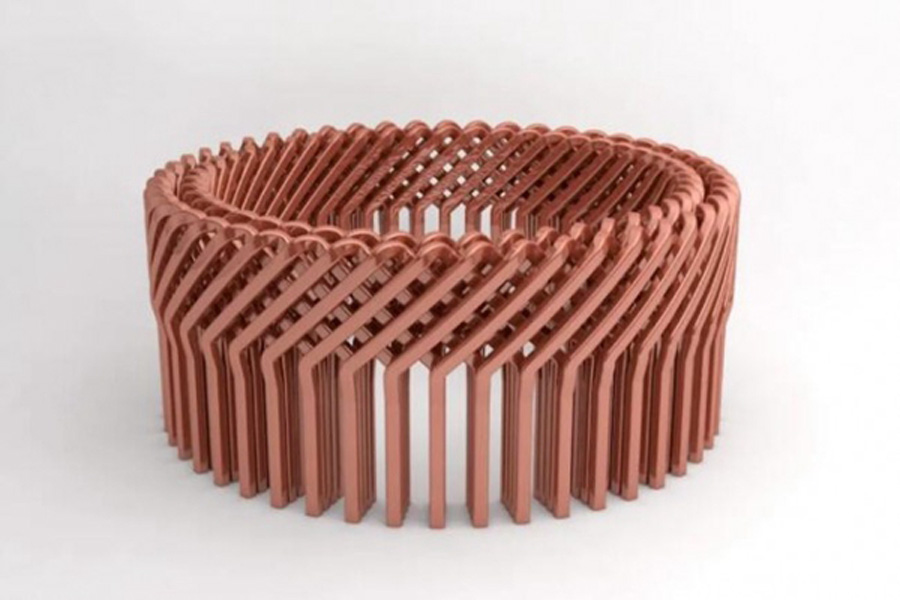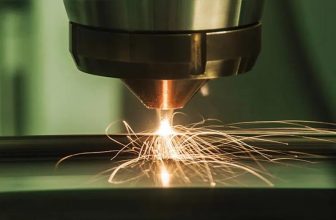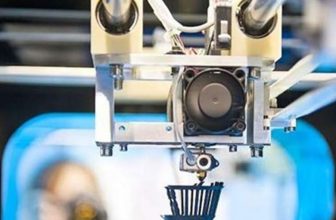
In the past 2-3 years, high-temperature 3D printing has seen amazing growth. Over the years, most thermoplastic 3D printing has been limited to a small part of thermoplastics, mainly PLA and ABS, and some PETG. This is still the case for most desktop devices, but in recent years many industrial-grade 3D printing devices that can process materials at higher temperatures have been developed. So what are these high-temperature plastic materials? What are their characteristics? How to use them in 3D printing?
High temperature materials are very useful because they can be used in more environments. Consider the plastic part in a car engine: if exposed to a sufficiently high temperature, it will soften or even melt. However, if it is made of a material with higher heat resistance, it can be a friendly solution to reduce the weight of the car. Plastic parts are generally lighter than metal parts, which is advantageous in many ways, especially in the automotive and aerospace industries. Therefore, people are very enthusiastic about these high-temperature 3D printed parts.
Generally, open desktop 3D printers are completely inadequate for 3D printing high-temperature materials, because the required heat must be enclosed and precisely controlled. According to the market research of 3D Science Valley, some 3D printer manufacturers focusing on high-temperature materials have appeared on the market, including Roboze, INTAMSYS, Minifactory, etc. Some original manufacturers, such as Stratasys, EOS also provide high-temperature thermoplastic material printing function, HP, voxeljet-Voxel, etc. provide nylon high-speed 3D printing function.
l. PEEK
The chemical name of the polymer is “polyetheretherketone”, which is actually part of the PAEK family, apparently invented by Victrex in the UK in the 1980s. It has strong durability, so it becomes one of the most popular high temperature 3D printing materials, so it is usually used for high stress applications.
Polyetheretherketone (PEEK) has the following characteristics
High temperature resistance: PEEK has a high glass transition temperature (Tg=143°C) and melting point (Tm=334°C), its load heat distortion temperature is as high as 316°C, long-term use temperature is 260°C, and instantaneous use temperature can reach 300 ℃.
Self-lubricity: PEEK has good sliding properties, and is suitable for occasions where low friction coefficient and wear resistance are strictly required, especially PEEK modified with carbon fiber, graphite, and PTFE has excellent wear resistance.
Corrosion resistance: Except for concentrated sulfuric acid, PEEK is insoluble in any solvent and has high chemical stability.
Flame retardancy: PEEK is self-extinguishing, even without any flame retardant, it can reach the UL standard 94V-0.
Ease of processing: Because PEEK has good high-temperature fluidity and high thermal decomposition temperature, various processing methods can be used, such as injection molding, extrusion molding, compression molding and melt spinning.
Mechanical properties: PEEK has good toughness and rigidity, and it has excellent fatigue resistance comparable to alloy materials.
Electrical properties: PEEK has high volume resistivity and surface resistivity. It can withstand various frequency AC potential field strengths under a wide temperature range and environmental changes, and maintain good insulation properties.
Hydrolysis resistance: The resin and its composite materials are not chemically affected by water and high-pressure steam, and can be used continuously in high-temperature and high-pressure steam or water environments to maintain good mechanical properties.
Weather resistance: Excellent weather resistance. The polymer can be used to manufacture components that require strict working environment or require frequent sterilization treatment.
PEKK
The chemical name “polyetherketoneketone”, this emerging 3D printing material is becoming more and more popular. The difference between PEKK and PEEK is not only its name, but also because they have many common characteristics. However, PEKK can withstand greater compression forces, and heat resistance is often higher than PEEK.
3.PEI
The chemical name is “Polyetherimide” and can also be found under SABIC’s trademark “ULTEM”. It is one of the first high-temperature 3D printing materials provided by Stratasys and can be used as a material option for its Fortus equipment. Although cheaper than PEEK, its heat resistance and strength are also slightly worse. PEI is usually used in aerospace applications.
PPSU / PPSF
The chemical name “polyphenylsulfone”. This material has high strength and chemical resistance. Several companies, including Stratasys, offer this material option.
PAEK
The chemical name “polyaryl ether ketone”. This material is relatively new compared to the high-temperature 3D printing space, but it has an extremely high temperature resistance of up to 350C, and compared with other high-temperature materials, it produces fewer toxins when burned. This makes it useful for applications where human exposure may occur.
PC
Polycarbonate refers to a type of polymer that incorporates carbonate in its structure. PC is a very popular material because of its excellent durability and high impact resistance and scratch resistance. Therefore, it is commonly used in consumer products.
PA
Polyamides are a very common 3D printing material, although it may be difficult to prove that they are high-temperature materials because some polyamides have lower glass transition temperatures compared to other materials on this list. There are several types of PA, usually represented by numbers: PA-6, PA-11, PA-12, PA-66, etc. They are also called “nylons”.
The main varieties of nylon are nylon 6 and nylon 66, occupying an absolute dominant position, followed by nylon 11, nylon 12, nylon 610, nylon 612, in addition to nylon 1010, nylon 46, nylon 7, nylon 9, nylon 13, new There are nylon 6I, nylon 9T and special nylon MXD6 (barrier resin), etc. There are many modified varieties of nylon, such as reinforced nylon, monomer cast nylon (MC nylon), reaction injection molding (RIM) nylon, and aromatic nylon , Transparent nylon, high impact (super tough) nylon, electroplated nylon, conductive nylon, flame-retardant nylon, nylon and other polymer blends and alloys, etc., to meet different special requirements, widely used as a substitute for traditional materials such as metal and wood Supplies, as various structural materials.
So far, according to the market research of 3D Science Valley, the most widely used plastic in selective laser sintering powder bed-SLS process, multi-jet melting-MJF process, and high-speed sintering-HSS process is polyamide (PA)-nylon. Nylon is stronger and more durable than some other plastics (such as ABS). Although SLS equipment manufacturers or other 3D printing technology equipment manufacturers provide some form of PA, the most basic varieties are PA11 and PA12. Of course, there are many types. PA composite materials, including glass reinforced nylon, carbon fiber reinforced nylon, to provide certain additional properties.
Most PA sintered parts cannot be printed in multiple colors at once. One exception is inkjet technology (such as MJF), which can deposit color inks on 3D printed parts to create vibrant full-color objects.
PVDF
The chemical name “polyvinylidene fluoride”. This is a very new material for 3D printing, currently only supported by a few 3D printer manufacturers such as Minifactory. The main claim of PVDF is that it is almost completely non-reactive with other materials, making it suitable for specific applications that require exposure, including biomedical applications.
TPI
Thermoplastic polyimide seems to be only in the research stage of 3D printing, TPI has abrasion resistance, high temperature resistance and long-term durability. It may become another material for 3D printing in the future.
According to market research conducted by 3D Science Valley, Victrex in the UK, Solvay in Belgium and Evonik in Germany are the top three PEEK producers in the world.
British Victrex (Victrex)
Victrex is leading a consortium of companies and organizations to devote themselves to 3D printing (additive manufacturing or AM) innovation. As part of its key role, Victrex will develop new high-performance polyaryl ether ketone (PAEK) polymer grades based on the design of new chemical formulations dedicated to additive manufacturing processes.
In fact, Victrex’s PAEK polymer has been used in filament melting and powder laser sintering 3D printed parts, and the company is actively developing new solutions. In the industry, the alliance is focusing on the development of new application areas for new PAEK polymer grades, which is expected to bring revolutionary changes to additive manufacturing technologies focused on the aerospace industry.
Solvay, Belgium
Solvay’s PEEK material has been used in 3D printing and has obtained a series of successful cases. Among them, the Polimotor 2 project led by legendary automotive innovator Matti Holtzberg is equipped with Solvay’s KetaSpire® polyether ether ketone (PEEK) enhanced grade Produced 3D printed fuel intake manifold. The product is made by Arevo Labs, a leading company in the additive manufacturing of composite parts, using innovative reinforced filament fusion technology. Solvay is the main material sponsor for this highly anticipated technology project.
Replacing the original aluminum intake manifold with PEEK can reduce component weight by 50%. The material selected specifically for Polimotor 2 is a custom-formulated reinforced grade KetaSpire® KT-820 PEEK containing 10% carbon fiber. KetaSpire® PEEK is one of Solvay’s most excellent polymers. It can withstand automotive working fluids well and has reliable mechanical properties at a continuous use temperature of up to 240°C (464°F). These qualities make this material an ideal choice for the Polimotor 2 fuel intake manifold, because the temperature in the intake area near the piston reaches 150°C (302°F).
The Polimotor 2 project aims to develop a fully plastic four-cylinder double overhead camshaft engine weighing between 138 and 148 pounds (63-67 kg), or 90 pounds (41 kg) lighter than existing standard engines. In addition to the existing fuel intake manifold products, this revolutionary project of Holtzberg will give full play to the advantages of Solvay’s advanced polymer technology and develop up to 10 engine components. Including water pump, oil pump, water inlet/outlet, throttle valve, oil rail and other high-performance components. Solvay materials that are expected to be used include Amodel® polypeptide amide resin (PPA), AvaSpire® polyaryl ether ketone (PAEK), Radel® polyphenylene sulfide (PPSU), Ryton® polyphenylene sulfide (PPS), Torlon® poly Amide-imide (PAI) and Tecnoflon® VPL fluoroelastomer.
Similar to the traditional filament fusion 3D printing process, the Arevo technology stacks polymer filaments upward or along the length to form a complex shape. In this way, digitally designed products can be quickly processed into functional parts, saving the time and cost of manufacturing molds and then prototype manufacturing. However, Arevo’s enhanced filament fusion technology platform has a unique ability to print enhanced PEEK polymers. Combined with Arevo’s process control software, this platform can be used to optimize the mechanical properties of printed parts.
German Evonik (Evonik)
Evonik has more than 40 years of experience in the development and production of high-performance polymers. Its diversified product portfolio includes solutions for almost all industrial applications. Therefore, the group is a reliable partner for long-term cooperation with customers in the global PEEK market.
With excellent heat resistance and chemical resistance, Evonik’s VESTAKEEP® special polymer can replace metal parts to meet the needs of lightweight structural applications.
VESTAKEEP® Easy Slide I is a PEEK modified product with superior wear resistance and low sliding friction. It can be used to produce smaller and stronger structural components, such as vacuum pumps. And VESTAKEEP® 5000 HCM (Hot Compression Molding) products can improve the production efficiency of customized PEEK seals, so that these seals used in the oil and gas industry have excellent mechanical properties and outstanding performance.
Oxford Performance Materials OPM
Since 1999, Oxford Performance Materials (OPM) has been developing advanced applications and proprietary manufacturing processes of PEKK materials for biomedicine, aerospace, and industrial products. The brand is well known in the industry as OXPEKK®.
The American Oxford performance PEKK material is an ultra-high performance polymer with excellent strength, chemical resistance, low and high temperature resistance, radiation resistance, and excellent wear resistance.” Because of these impressive properties OPM combines it with the ability of 3D printing to produce objects with unique geometric shapes, and specifically provides low-weight, high-performance 3D printed parts for aerospace, transportation, energy, medical and semiconductor fields.
Oxford Performance Materials (OPM) has been selected to provide 3D printed structural parts for the Boeing CST-100 rocket spacecraft, and OPM has begun shipping parts printed with OXFAB materials. The CST-100 rocket spacecraft is designed to transport up to seven passengers, or a mixed crew and cargo, and operate in low earth orbit-this rocket spacecraft is part of NASA’s commercial crew program cooperation project.
Major international nylon manufacturers include Dow Chemical, BASF, Saudi Basic Chemicals, Rhodia, LANXESS, DSM, Evonik, Arkema, Invista, and EMS. my country’s nylon market is in a state of reliance on imports, where demand exceeds supply. The domestic brand Zhong Shenma Industry is the main domestic manufacturer. In the field of 3D printing, Evonik, BASF, and Hunan Huashu Hi-Tech are the most active manufacturers.
German Evonik (Evonik)
Evonik has more than 40 years of experience in the development and production of high-performance polymers. Its diversified product portfolio includes solutions for almost all industrial applications. Therefore, the Group is a reliable partner for long-term cooperation with customers in the global nylon market.
Evonik produces flame-retardant PA12, as well as new rubber-like materials and PA613, which combine high temperature resistance, high elongation and high stiffness, which can be used to develop new applications, especially in the transportation industry.
In addition to the SLS process, for HP’s MJP equipment, Evonik has so far developed polyamide (PA) 12 powder and PA-11 powder materials.
BASF, Germany
BASF is also developing 3D printing materials for powder bed technology. Ultrasint PA6 LM X085 is a new type of material used in selective laser sintering (SLS) process. It is a gray polyamide-6 powder with a melting point of about 193 degrees Celsius. The manufactured parts are characterized by high rigidity and high strength, and are easy to process on the most commonly used SLS machines.
PA6 is a powerful nylon used in the automotive and electronics industries to replace metals to create lighter and cheaper parts. In the processing environment of SLS, PA6 requires a higher processing temperature. Especially in the automotive and consumer goods industries, most of the current users are limited to choosing between nylon PA11 and PA12.
BASF’s Ultrasint PA6 powder used in the SLS laser sintering process has improved temperature resistance, provided higher strength and modulus, as well as burst and pressure resistance.
Hunan Huashu (Farsoon)
Hunan Huashu has launched a series of nylon materials. Among them, the nylon material FS3200PA Nylon Powder is suitable for products with high mechanical performance and toughness requirements, parts manufacturing or large parts manufactured with adhesives, complex parts and plastic models, automobile oil pipelines, Brake pipes, etc.
In terms of materials, Huashu Hi-Tech also cooperated with Prodways to promote the overseas market share of nylon materials.
Windform, Italy
Italy’s CRP Technology’s Windform polyamide material has produced global products that require excellent mechanical and aesthetic properties for SLS laser sintering technology, and their plastic products can be processed by CNC machine tools. The name of the Windform material comes from because this material was originally used in the rapid manufacturing of racing cars and used to make parts for wind tunnel testing.
The unusual feature of Windform materials is that these polyamide-based composite materials open up greater potential in the plastics field for 3D printing. Through carbon fiber or glass fiber reinforcement, these parts have important mechanical properties.
This makes Windform materials not only widely used in the manufacturing of structural parts in the automotive field, but also creates a strong aesthetic effect in the realization of parts.





